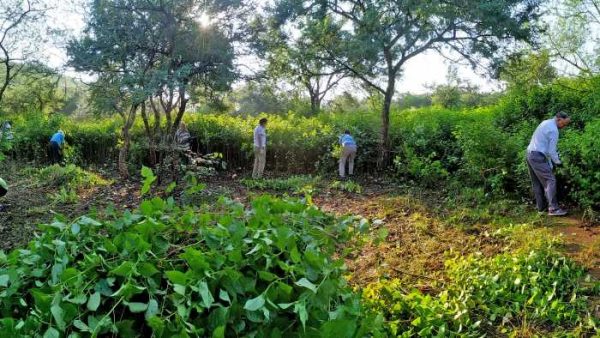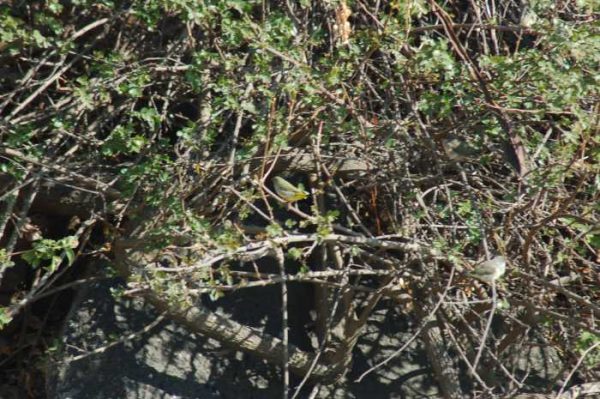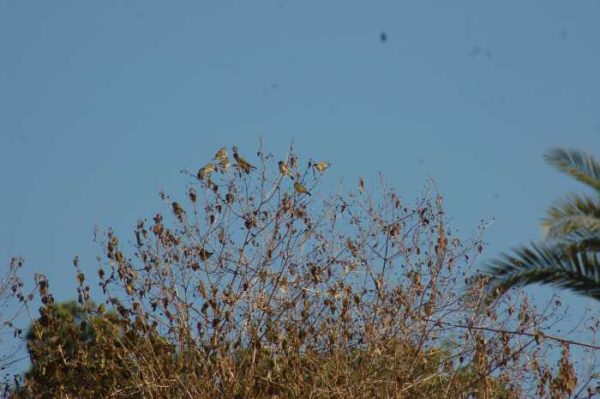
Udaipur : Ornithologists and bird lovers are apprehensive over the rampant Lantana eradication campaign at Sajjangarh Wildlife Sanctuary. They claim, only if the actions are combined with strategic re-plantation of local bushes of the site, then it could be of advantage to the avifauna, otherwise, the campaign could upset the local birds after a great tragedy of Sambhar Lake.
Bird lovers cite examples of similar eco-restoration works undertaken previously at Keoladeo National Park that was successful due to strategic management whereas at Mount Abu the program failed lacking ‘no replacement’ plan leading to an irreparable loss of the endemic specie Tawny bellied Babbler, that once had large colonies in the area. Lantana is a hardy plant and efforts to eradicate it even at Kumbalgarh, Jaisamand and other sanctuaries had not yielded desired results, experience show. Experts say only way to control Lantana is natural regeneration of local species or rigorous intentional planning for continuous years.

“Right now we hardly find any study which could depict the bird diversity of the sites of interventions. In such cases, the rampant uprooting of the Lantana might be disastrous. Unknowingly, sites could lose the birds of common sightings. The proportion of the open land might also affect the hiding spaces of the ground dwelling birds and the animals. Therefore, whether we are going in the right direction is a doubt” says Satya Prakash Mehra, an environmental and development professional.

He says the removal is necessary but the regeneration rate of the local species need to be assessed as well check for the re-growth of the Lantana should be solid. Experts say the Mount Abu Wildlife Sanctuary is heavily infested by Eucalyptus and Lantana. Eucalyptus is now naturalized in the Abu Hills while Lantana is well adapted by the globally important species like Green Avadavat (Amandava formosa), Grey Junglefowl (Gallus sonneratii), Tawny-bellied Babbler (Dumetia hyperythra abuensis) as reported in the scientific references. Despite of the fact that the infested species are disturbing the local vegetation, while working at Abu Hills, it was found that Lantana bushes were being used by many fauna species.

The Sloth Bear and the Red-Vented Bulbul were eating the fruits of the Lantana and acted as the best dispersal of the seeds in the interior of the forests. The bushes are not easy to cross by the humans, therefore, the ground dwelling birds like partridges, quails, jungle fowl habituated the undercover for the protection which otherwise being caught. Further, the bushes birds especially Babblers and Green Munia are well harboured by the Lantana cover. To clear Lantana, the plants were put on fire on a mass level which caused irreparable loss of habitat of the Tawny bellied Babbler which had large colonies there.

Another researcher, Sarita Mehra says at Keoladeo National Park, similar program of eco-restoration was organized where the community was involved to uproot the Prosopis juliflora. The program was successful in all the respect due to systematic approach applied for the wetlands. Blockwise removal and monitoring was the key feature for the program. Meanwhile, in Udaipur the forest department claims to have already planted 500 plants in some of the cleared area at Sajjangarh sanctuary. “We will soon take up grass and Baer seed sowing in the cleared pockets, effective replacement with alternate plant varieties would been ensured” says Ajit Uchhoi, the Deputy Conservator of Forest.

